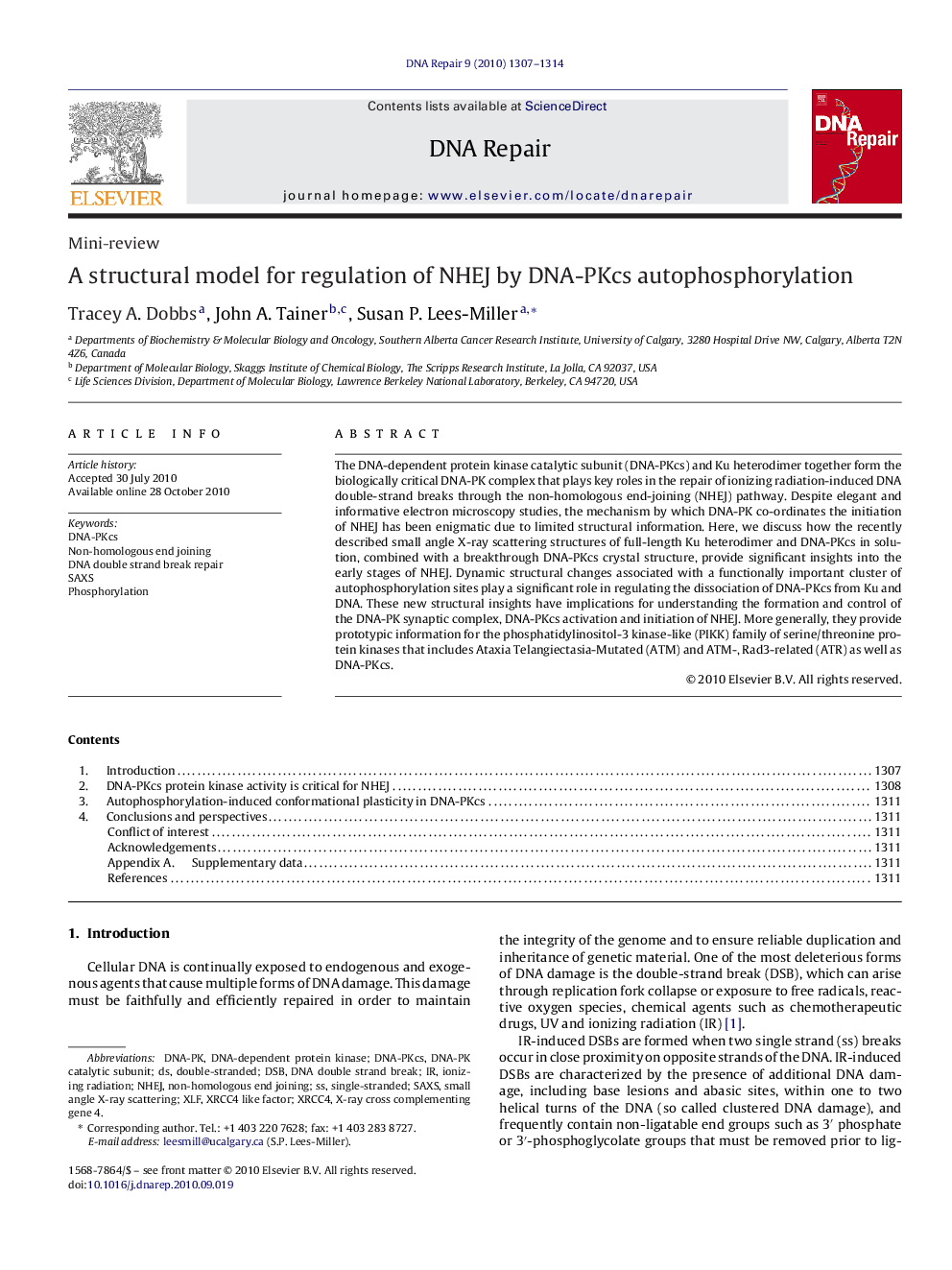| Article ID | Journal | Published Year | Pages | File Type |
|---|---|---|---|---|
| 1980405 | DNA Repair | 2010 | 8 Pages |
The DNA-dependent protein kinase catalytic subunit (DNA-PKcs) and Ku heterodimer together form the biologically critical DNA-PK complex that plays key roles in the repair of ionizing radiation-induced DNA double-strand breaks through the non-homologous end-joining (NHEJ) pathway. Despite elegant and informative electron microscopy studies, the mechanism by which DNA-PK co-ordinates the initiation of NHEJ has been enigmatic due to limited structural information. Here, we discuss how the recently described small angle X-ray scattering structures of full-length Ku heterodimer and DNA-PKcs in solution, combined with a breakthrough DNA-PKcs crystal structure, provide significant insights into the early stages of NHEJ. Dynamic structural changes associated with a functionally important cluster of autophosphorylation sites play a significant role in regulating the dissociation of DNA-PKcs from Ku and DNA. These new structural insights have implications for understanding the formation and control of the DNA-PK synaptic complex, DNA-PKcs activation and initiation of NHEJ. More generally, they provide prototypic information for the phosphatidylinositol-3 kinase-like (PIKK) family of serine/threonine protein kinases that includes Ataxia Telangiectasia-Mutated (ATM) and ATM-, Rad3-related (ATR) as well as DNA-PKcs.
